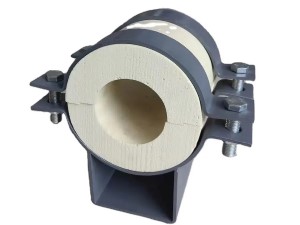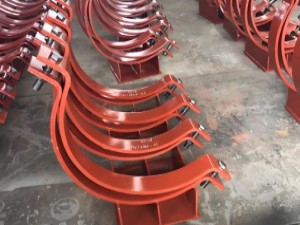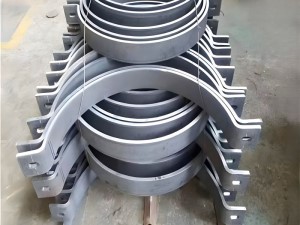When to use slip-on flanges vs. lap joint flanges?
Currently we are using lap-joint flanges and welding them directly to the piping. Is this an appropriate way to use lapped flanges, or should I change to using slip-on flanges.
I understand that lapped flanges are generally used with but ends, so as to make it possible to rotate the flange when needed, but do not understand wether or not a lapped flange should be welded or not.
Please advise as to the correct use of flanges.
lap joint flanges are very similar to a slip-on flange, with the main difference being that it has a curved radius at the bore and face to house a lap joint stub-end. Lap joint flanges and stub-end assemblies are typically used in situations where frequent dismantling is required for for inspection.
Slip-on Flanges:
Slip-On (SO) Flanges are preferred by some contractors, over the Weld-neck, because of the lower initial cost. However, this may be offset by the added cost of the two fillet welds required for proper installation. The strength of the slip-on flange is ample for it's rating, but its life under fatigue conditions is considered to be only one-third that of the weld-neck flange.
The slip-on flange may be attached to the end of a piece of pipe or to one or more ends of a pipe fitting. The slip-on flange is positioned so the inserted end of the pipe or fitting is set back or short of the flange face by the thickness of the pipe wall plus 1/8 of an inch. This allows for a fillet weld inside the SO flange equal to the thickness of the pipe wall without doing any damage to the flange face. The back or outside of the flange is also welded with a fillet weld.
A variation of the Slip-On flange also exists. This is the Slip-On Reducing Flange. This is simply a larger (say a 14") Slip-On flange blank that, instead of the Center (pipe) hole being cut out (or drilled out) for 14" pipe it is cut out for a 6" (or some other size) pipe. The SO Reducing flange is basically used for reducing the line size where space limitations will not allow the length of a weld neck flange and reducer combination. The use of the Slip-On Reducing Flange should only be used where the flow direction is from the smaller size into the larger size.
Lap Joint Flanges:
A Lap Joint Flange is a two piece device that is much like a weld-neck flange but also like a loose slip-on flange. One piece is a sleeve called a 'Stub-end" and is shaped like a short piece of pipe with a weld bevel on one end and a narrow shoulder on the other end called the hub. The hub is the same outside diameter as the raised face (gasket contact surface) of a weld neck flange. The thickness of the hub is normally about ¼" to 3/8". The back face of the hub has a rounded transition (or inside fillet) that joins the hub to the sleeve.
The other piece of a Lap Joint Flange is the backing flange. This flange has all the same common dimensions (O.D., bolt circle, bolt hole size, etc.) as any other flange however it does not have a raised face. One side, the backside, has a slight shoulder that is square cut at the center or pipe hole. The front side has flat face and at the center hole an outside fillet to match the fillet of the "Stub-end" piece. The flange part of the Lap-joint flange assembly is slipped on to the stub-end prior to the sleeve being welded to the adjoining pipe or fitting. The flange itself is not welded or fixed in any way. It is free to spin for proper alignment with what ever it is joining to.
The "Stub-end" can normally be purchased in two lengths. There is a short version, about 3" long and a long version of about 6" long. It is prudent for the piping designer to know which version is in the piping specification.
Because of it's two piece configuration, the Lap Joint Flange offers a way to cut cost or simplify work. The cost saving comes when the piping system requires a high cost alloy for all "wetted" parts to reduce corrosion. The sleeve or Stub-end can be the required higher cost alloy but the flange can be the lower cost forged carbon steel.
The work simplification comes into the picture where there are cases that require frequent and rapid disassemble and assembly during the operation of a plant. The ability to spin that backing flange compensates for misalignment of the bolt holes during reassembly.





